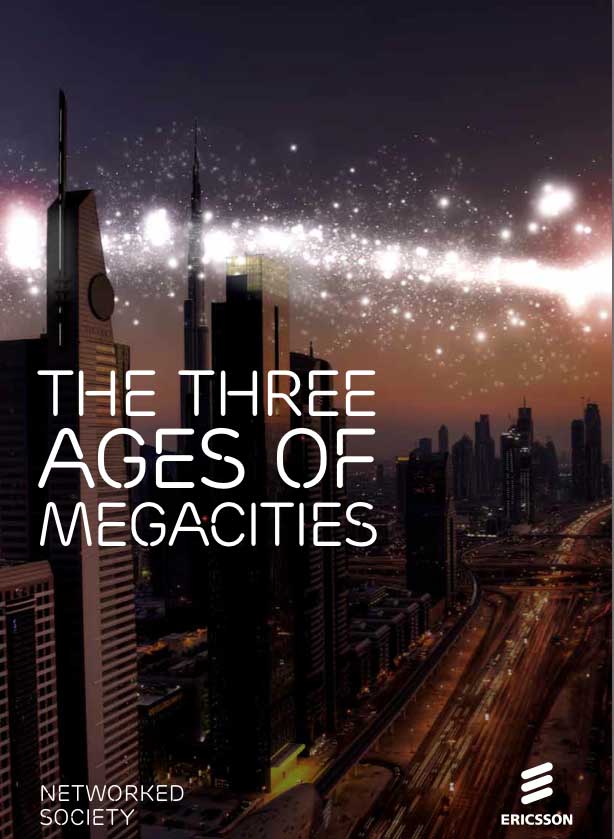Report: Managing Megacities (by UX Lab at Ericsson Research)

Megacities may be congested and complex, but are also among the planet’s most exciting places to live. They have proven effective at stimulating creativity, innovation, freedom and economic development.
Today, 50 percent of the world’s population lives in cities, a figure expected to reach about 70 percent by 2050. Almost all demographic growth over the next 30 years will be urban, and there is a constant stream of people moving from rural areas to cities.
The rise of the megacity has made an enormous contribution to the development of modern society. However, bigger populations also create challenges that megacities must address in order to retain their advantages.
The maturity level of a megacity is often closely connected to its ICT maturity, and therefore affects which types of ICT solutions are relevant and most effective. Megacities have a huge range of ICT opportunities, with countless potential connections, but on a very general level there are similarities between the most appropriate solutions for megacities within each maturity level.
There is no single set of solutions to suit every megacity and all their residents with their subjective views on quality of life. Any solutions must take local conditions into account. This is also one of the most important considerations for us at Ericsson when we create the fundamental building blocks for ICT solutions to meet megacity challenges around the world. They must be designed for diversity, flexibility, locality, transparency and uniqueness.
This report – compiled by User Experience Lab at Ericsson Research – highlights some of the effects of, and challenges stemming from, rapid urbanization and the emergence of megacities. It looks at how governments can manage the largest cities in the world, the significance of a city’s maturity level, and what “good quality of life†means for city dwellers around the world. The sources include publicly available material such as reports and data from international organizations, academic studies and business papers from management consultants. In-house research conducted by the Ericsson Networked Society Lab and Ericsson ConsumerLab is also among the key sources.



